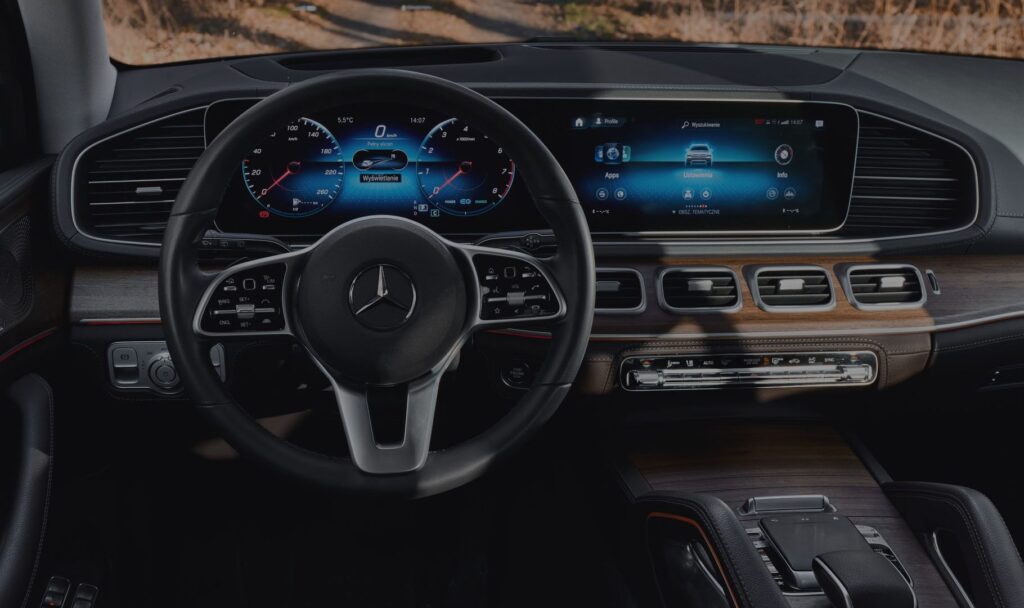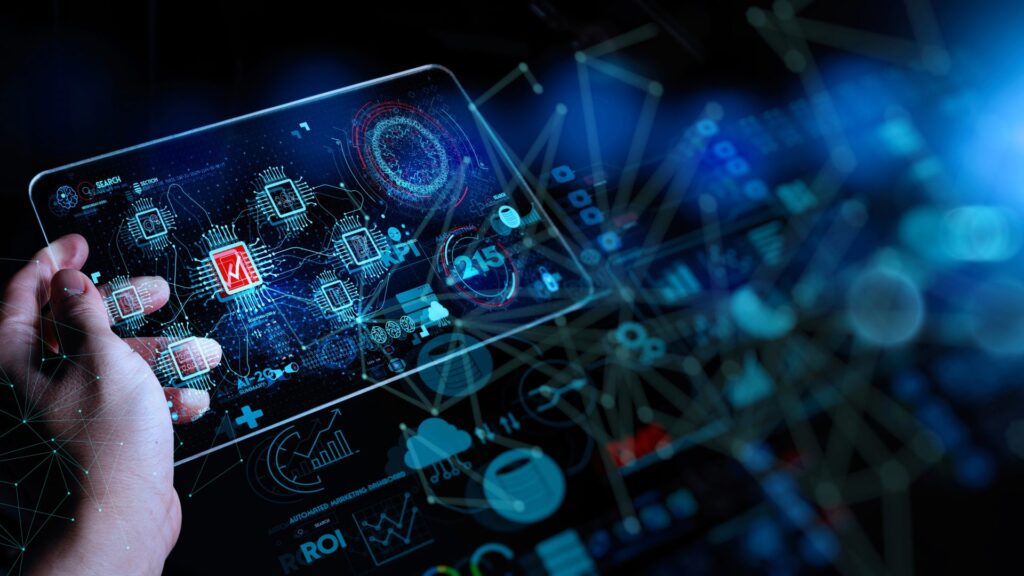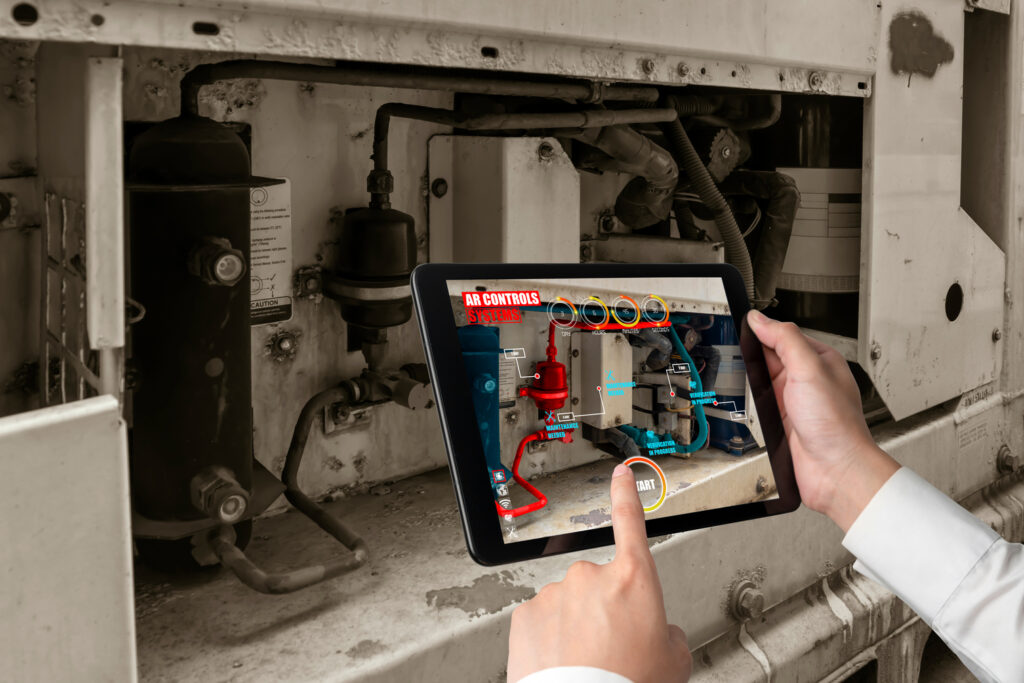The time for HMI innovation is now – an interview with Przemysław Nogaj
In one of the recent articles on our blog, we explained what HMI is and how it can be used. We also discussed how it would develop in the future. Today, we’d like to introduce our expert in the field of HMI – Przemysław Nogaj. In this interview, you can read about how he got into HMI technology, what his approach is to working with clients and how he sees the future of Human-Machine Interfaces.
How did you get into HMI technology? What has your career path been so far?
I am very impatient, and I like to see results very quickly. Otherwise, I get discouraged easily. In the world of HMI, it all comes down to the interaction with the user, and the results need to be almost immediate. Equally important, they must also be verified fast. The thing about HMI is that if we choose the right technology, it’s actually easy to modify the things we see and feel. In other words, if we notice that something is not working, we can quickly change it and make it work.
I got into the HMI domain because I was naturally drawn to developing what is visual and interactive. I was very lucky to work as a developer on projects that involved that. I was also very fortunate to have met people who were focused on the user-interface interaction. They showed me how important it is that the interaction is designed correctly and based on a good understanding of the user.
As soon as I began to work with user experience design specialists, I completely changed my perspective. From that moment on, I began my career in the HMI domain. Also, from that point, each time I was working on a product, I was first thinking about how I perceive it, if it’s convenient to use, whether it provides the user with the right kind of message and makes it easy to interact accordingly. I started to look at the product from the user perspective. That has always interested me, even though I wasn’t fully aware of it.
As for my career path, I started as a regular software engineer. However, I quickly noticed that the world of HMI brings together many open-minded people and what I have to say also matters. In the next steps of my career, I participated in meetings with customers and users of the product. This way, I learnt to understand their needs. I also used to build system architecture.
Currently, apart from the fact that I still create and develop software, which gives me a lot of fun, I am more and more often focused on having meetings with clients and understanding their needs in order to propose an optimal solution. The other area of my work is setting out the direction for the HMI technology development at Spyrosoft.
How have you been building out the HMI technology domain at Spyrosoft?
I follow technological trends and participate in conferences. I try to see new opportunities. I also listen to the engineers I work with. They often come up with interesting ideas or approach me with problems they came across and we look for the best solution together.
I also help other engineers develop their career paths in a similar way to how I shaped my own. I give them space to experiment with various technologies. My task is to help them define research goals at a high level because I am also responsible for R&D), or sometimes support them in the development process.
We are constantly looking for new experts in technologies that have so far been associated with different areas, such as Unreal or Unity. We are looking for people who think like us, who aren’t satisfied with the status quo, but are looking for continuous development and have interesting ideas. My goal is to find them and create an environment for them to grow by finding a suitable client project or by creating space in internal projects where they can hone their skills.
What do you consider the most important when working with customers?
The most important for me are trust and partnership. We always work together with the client to ensure that their needs are addressed in the best possible way, but to achieve this, we must treat each other as partners and be honest with one another.
The more the client includes us in their processes, the easier it is for us to help them. I also believe that one of the most crucial factors of effective and fruitful cooperation is client’s openness to changes, not being satisfied with the current state of affairs, but always looking for new challenges.
How will the HMI technology be evolving in the next 2-3 years, in your opinion, and what innovations would you personally like to see in this area?
The changes are happening before our eyes. In recent years, there’s been a switch in the way of thinking about what HMI is and what user experience is in a broad sense, and we notice that this is a topic more complex than customer satisfaction.
The general trend is also that the world is moving fast nowadays. Therefore, innovation must be introduced here and now, or you will fall behind. A significant trend is also the optimisation of the production time to be able to quickly prepare a prototype, implement it into production and collect user feedback.
From a technological perspective, it seems to me that a very prominent trend has been extended reality and augmented reality. These technologies open up the possibility of perceiving interactions with machines on a different, previously unavailable level. They allow much more information to be assimilated much faster.
Another trend that is slowly developing and may bring interesting results in the future is Neuralink, which allows you to interact with devices using your thoughts. I wonder how much of a game changer it will be. So far, it is a one-way human-to-machine, interface. In the next step, it may also work the other way round. Currently, an important, as well as more and more popular trend, is favouring voice interaction over touch interaction.
Machine Learning technology is one of the fastest growing trends in HMI. User interfaces begin to understand and anticipate what we’ll want to do in the next step through learning our behaviour. Before that, it was us, the designers and developers, who prepared the scripts and use case scenarios. Now, we have to predict user intent, even before the user even thinks about it. To do this, we have to analyse the patterns of their behaviour and modify our interface accordingly so as to predict future user actions.
We’ll help you create next-gen, future-proof HMI experiences
You can count on our expertise in designing and developing cutting-edge human-machine interfaces for in-vehicle infotainment systems, industry 4.0 solutions and more.
About the author
RECOMMENDED READING:
CONTACT US




